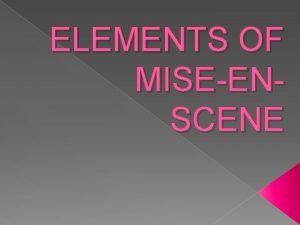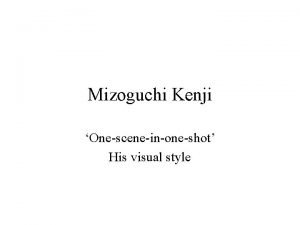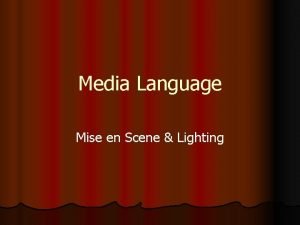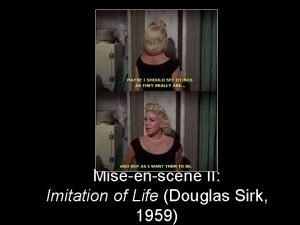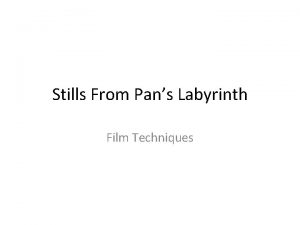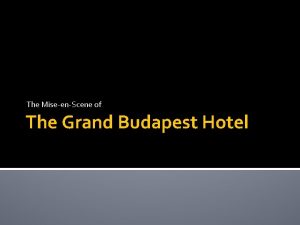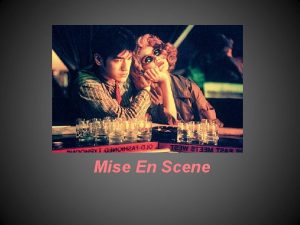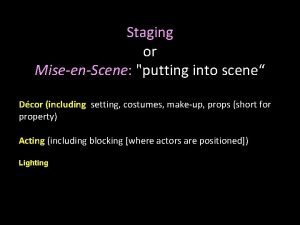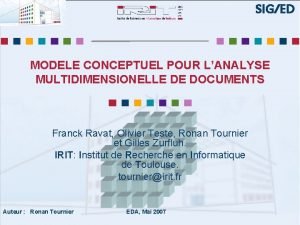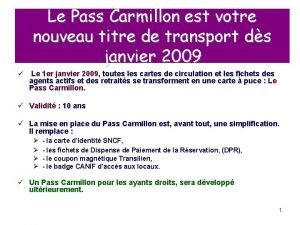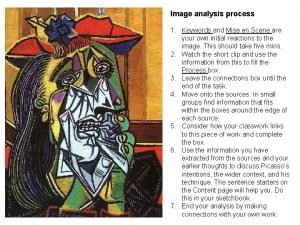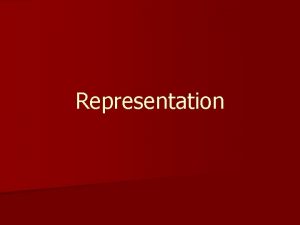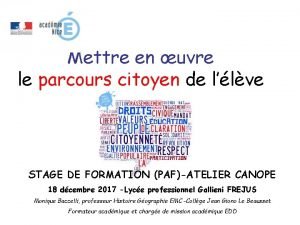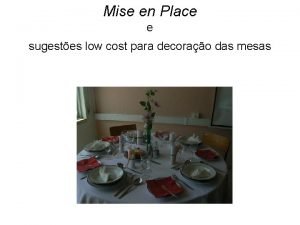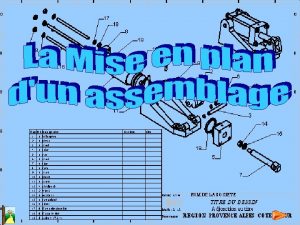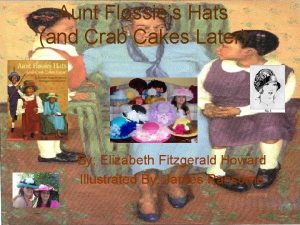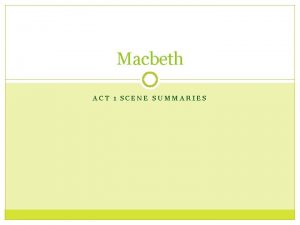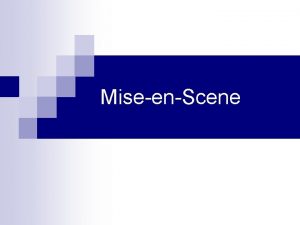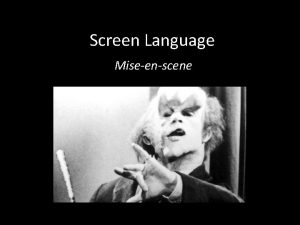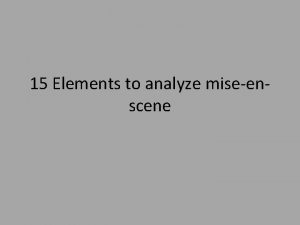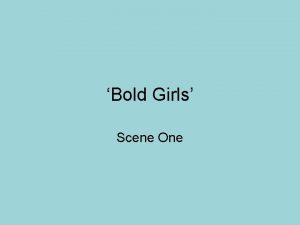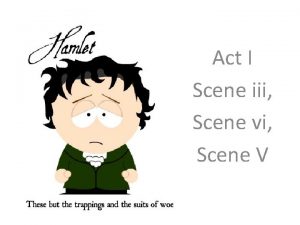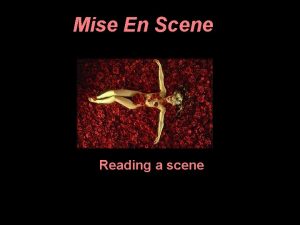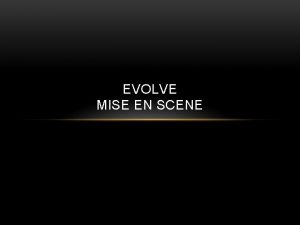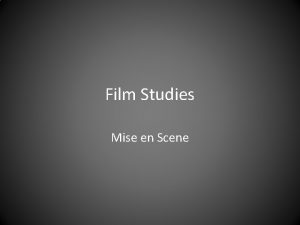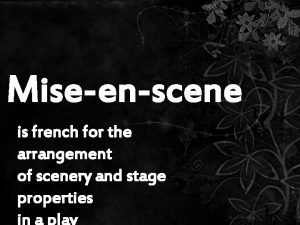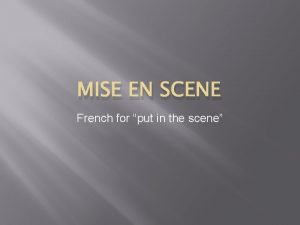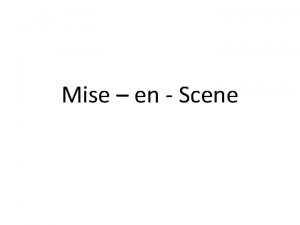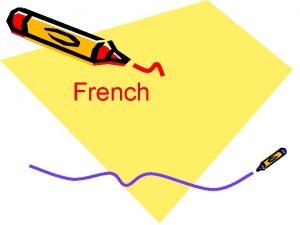Miseenscene MISE EN SCENE is a French Expression
























- Slides: 24

Mise-en-scene

� MISE EN SCENE is a French Expression that means ‘staging an action’. � MISE EN SCENE in Cinema Studies refers to all the visual elements within the frame that and support the telling of the story: • Setting, • Lighting, • Costumes, and • Acting Style. What is it?

Mise-en-Scene Usually works subtly on viewer’s emotional and intellectual responses without them necessarily consciously noticing how this is being done. • Can be used to create symbolism for character traits, themes and social values. •

Mise-en-Scene By learning to look at a film analytically, we can see how each element can be used by filmmakers to ‘position’ the viewer, cueing them into much more than the mere surface meaning of the film.

Acting Style Costume Lighting Setting The Green Lantern (2011) – Ryan Reynolds

The setting is the physical location of the film – the countryside, the city, the room, a futuristic place.

�Naturally, most films have more than one setting and the various characters travel from one setting to another. �The film setting does more than simply physically locate the action of the film; it can: ◦ Create or express the mood of the film, ◦ Can be used to represent an extension of a character’s state of mind. Setting

A setting. . Changes in setting can alert us to important themes, signaling: NEW START CHALLENGES DISASTER SUCCESS LOSS, ETC

Props Are objects that appear in the setting, • Often provide clues about the characters, • Can reappear from scene to scene & setting to setting, • These repeated images are called MOTIFS. •

Lighting Is the manipulation of light to selectively highlight specific elements in each scene so that they appear in a particular way. This is one of the most complex and powerful techniques that filmmakers use to create atmosphere and meaning.

Lighting Light generates much of the distinctive mood of the film and can be used to indicate The time of day or night, • The seasons, • The state of mind of a character, or • Enhance a theme. •

When discussing the use of light, we need to consider 4 elements:

colour, intensity and texture of light, �The use of light to frame specific elements in a shot, �The direction that the light comes from, and �The absence of light when shadows are used. Li gh t i n g C o n s i d era t i o n s �The

Costumes Are the clothes, make-up and accessories word by the characters.

More on costumes… Other elements of costumes include the colours of the clothes and personal props. Costumes give viewers critical information about characters

Acting Style Actors portray their feeling, motives, attitudes and state of mind of characters by manipulating their facial expressions, posture, voice and gestures.

What do we look for in an actor when analysing film?

We should discuss anything an actor does that is not actual dialogue or action. § We need to look for all the subtle, and not so subtle, mannerisms, expressions and body language. §

§ Although it is impossible to summarise every aspect of what an actor does to flesh out a character, the four key areas to look at are; § Facial expression, § Posture, § Voice, and § Gesture. Facial Expressions

Consider the character’s posture. . Examine the way in which the character holds their body (standing straight or slumped). The parts of the body that the characters lead with (for example, head, chest). How relaxed or rigidly they stand.

Consider their gestures

Consider their voice Note the volume (loud or soft), speed (fast or slow), pitch (high or low)

Changes in acting style It is highly unusual for an actor to go through an entire film without their gestures, mannerisms and expressions changing or developing to some degree so it is important to consider how and why actors change the way their character appears.

Lastly, consider CGI (computer generated images)
 Contextualized props
Contextualized props Mise en scene
Mise en scene Mise en scene lighting
Mise en scene lighting Mise en scene
Mise en scene Pans labyrinth stills
Pans labyrinth stills Grand budapest hotel mise en scene
Grand budapest hotel mise en scene Mise en scene 5 elements
Mise en scene 5 elements Mise en scene staging
Mise en scene staging Quadratic formula
Quadratic formula Mise à sec
Mise à sec Mise.siged
Mise.siged Code secret pass carmillon
Code secret pass carmillon Objectives of canape
Objectives of canape Mise en image
Mise en image Intranet mise lavoro agile
Intranet mise lavoro agile Mise en abyme
Mise en abyme Basic preparation for bar set up
Basic preparation for bar set up Mise en contexte exemple
Mise en contexte exemple Parcours citoyen brevet exemple
Parcours citoyen brevet exemple Mise en place checklist
Mise en place checklist Jerolim mise
Jerolim mise Mise en place mesa
Mise en place mesa Plan assemblage
Plan assemblage In french in french
In french in french Summary macbeth act 1
Summary macbeth act 1
